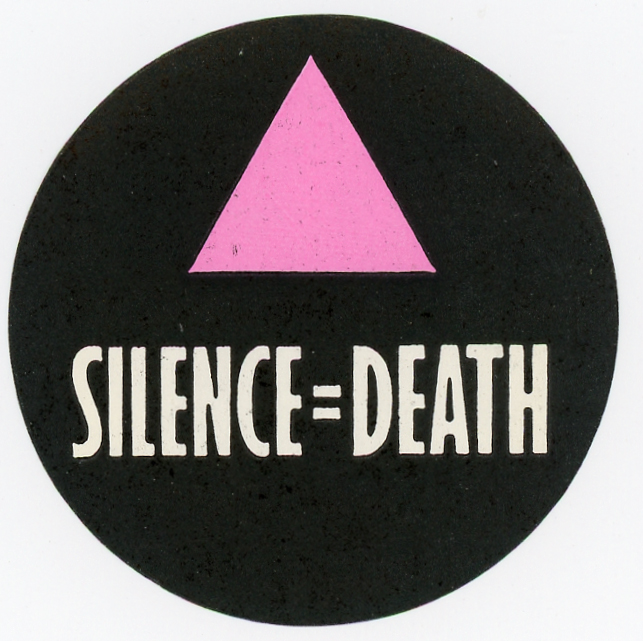Featured artist: Avram Finkelstein, Part I
- Published
- in all, Featured artist
Avram Finkelstein is an AIDS activist, artist, writer, and during the late 1980s, a co-founding member of the legendary Silence=Death and Gran Fury collectives in New York City. In 1986, he and five others designed the iconic “Silence=Death” poster, which was soon shared with ACT UP, the AIDS Coalition to Unleash Power, in order to propel the image’s ubiquity through buttons, t-shirts, and stickers.
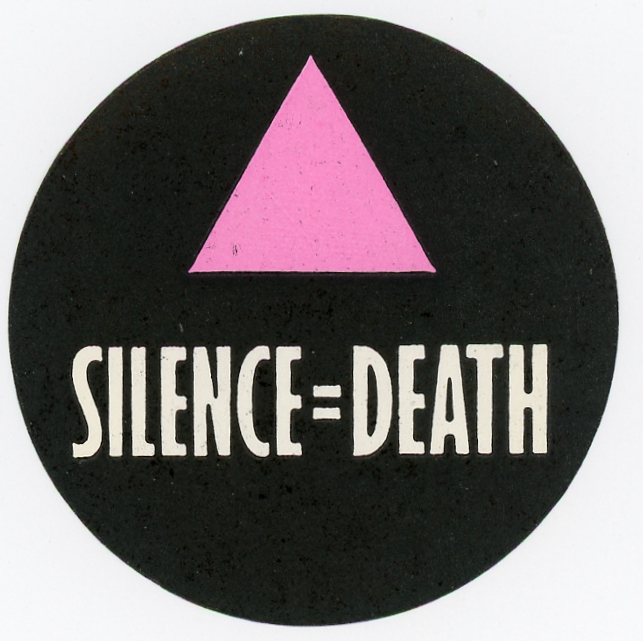
He states, “[t]he AIDS activist community… actually created it, a community in search of its voice, one that went on to find it through the activation of its own social spaces. [The Silence=Death] image, as we currently understand it, is a product of collective world-making, the sort of collectivity which moves every one of us, as individuals and as a culture, and which is transformative.”[1]
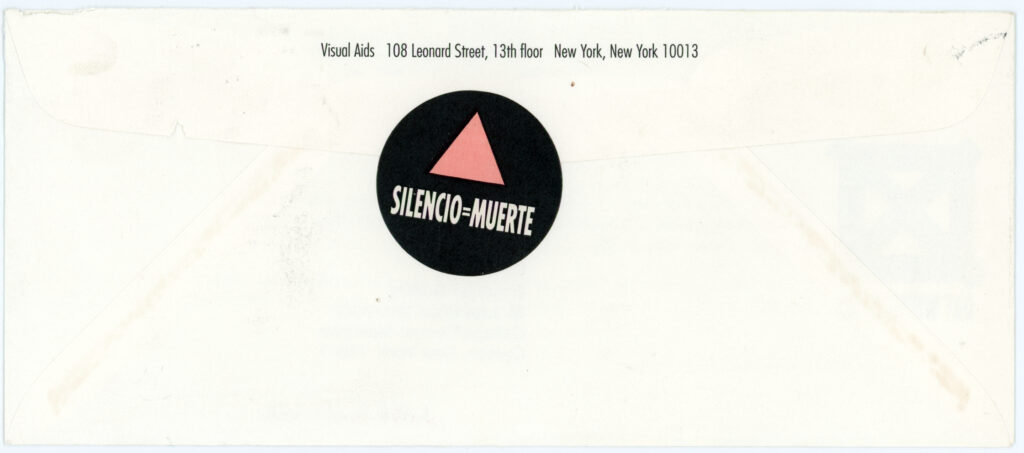
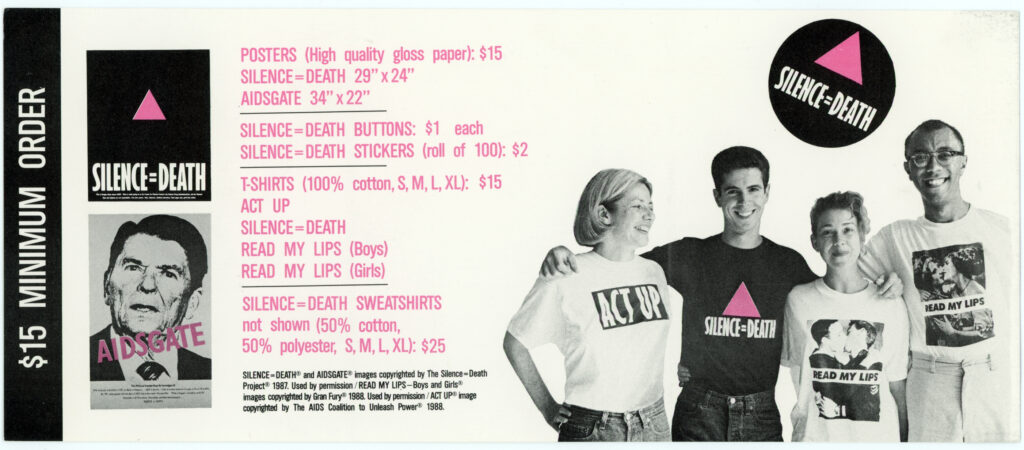
Finkelstein’s book After Silence: A History of AIDS through its Images recounts in animated detail the “urgency of the moment” and the six months it took for the group to conceptualize, debate, and bring forth the first Silence=Death poster. In so doing, he describes their choices of text (“silence equals death”); pink triangle (“ a more vivid fuchsia, Pantone 212C”), black background (expansive, “to create a ‘meditation zone’ and serve as a visual palate cleanser”); text placement (“rows of modifying text sat outside the [black] field”); text size (“can you read it from a moving car?”); type font (Gill Sans Serif Extra Condensed); type kerning (expanded spacing between I, L, and E); paper stock (glossy coated); paper size (“taller than standard stock dimensions, a design caveat that added costs for … extra trim”); tagline text content (“priming the pump for activist engagement” and “stratified for multiple audiences”); tagline text size (smaller, “forcing more intimate contact on the part of the reader and potentially creating a self-reinforcing performative dynamic of presumed engagement”); audience (“to stimulate political organizing in the lesbian and gay community, and to simultaneously imply to anyone outside the community that we were already fully mobilized”); poster placement (“East Village, Lower Broadway, SoHo, the West Village, Chelsea, Hell’s Kitchen, and parts of the Upper West Side,” on the streets “hung alongside advertising posters, in the spaces reserved for commercial enterprises”); and poster timing (mid-March, “during the transitional period when [people] came out of hibernation hungry for social interaction, but before the distractions of spring set in…”).
It’s one of the most vivid accounts of the birth of an image that I’ve ever come across and illustrates “intentionality” at its finest.
For more on the history of the Silence=Death image and the art made during the height of the AIDS crisis in the U.S., see David Zwiner Gallery’s recent exhibition More Life.
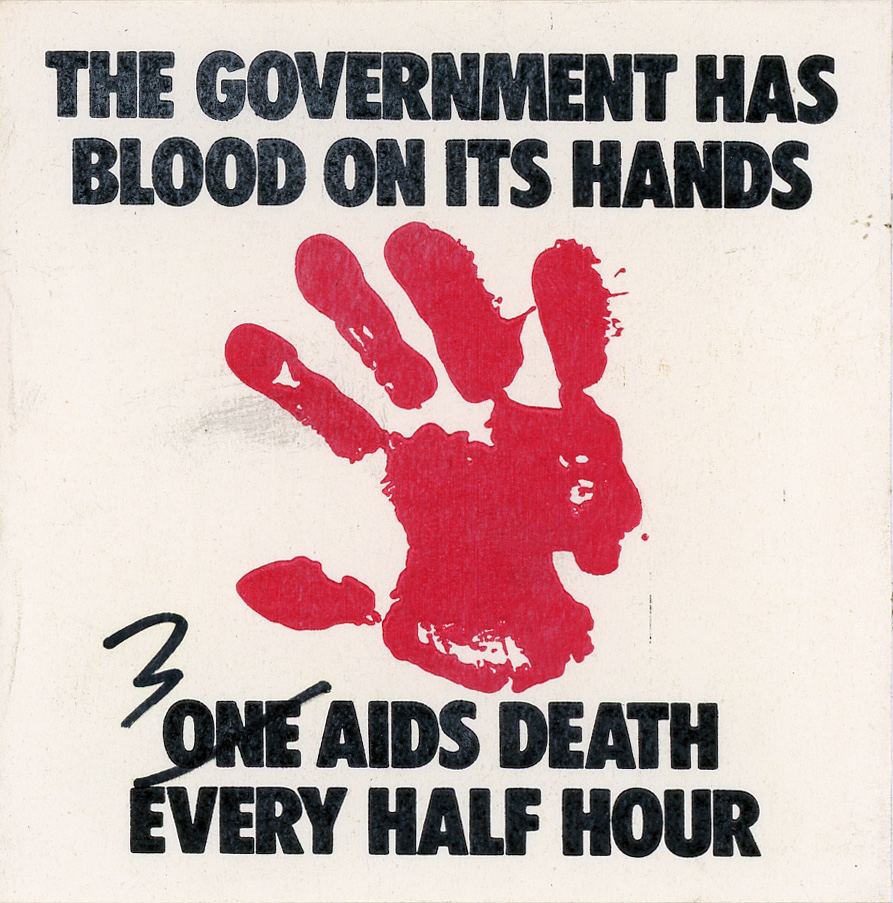
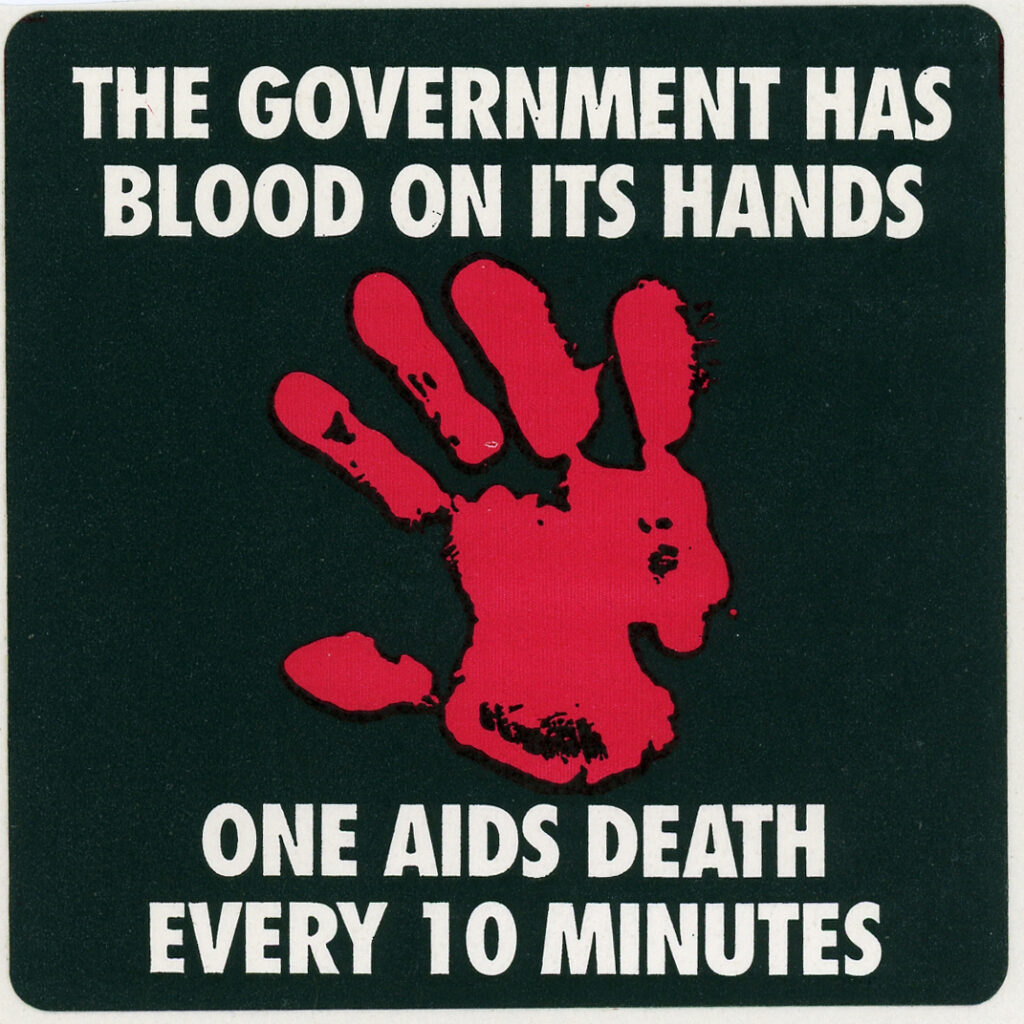
Finkelstein also published two informative blog posts for LGBTQ at the New York Public Library. The first is for the Silence=Death poster, and the second is for The Government has Blood on its Hands.
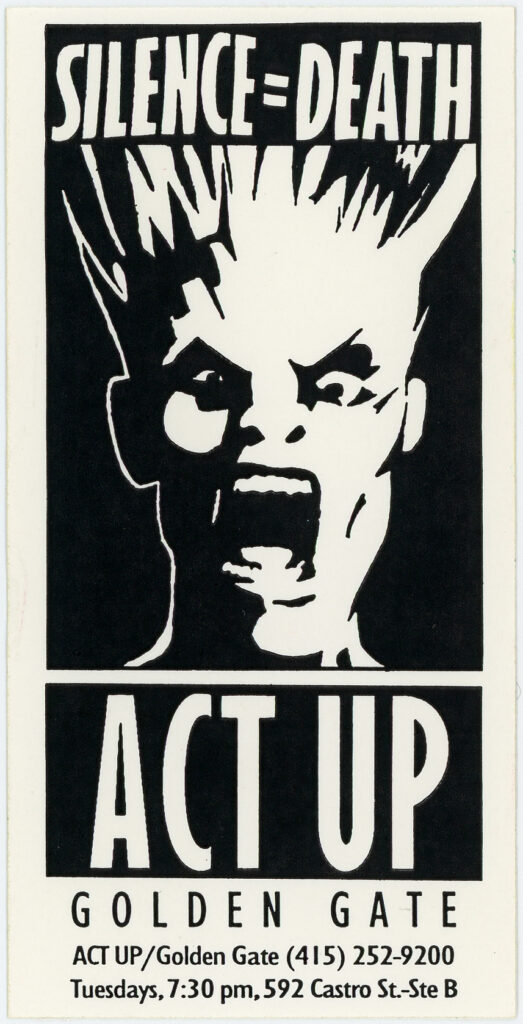
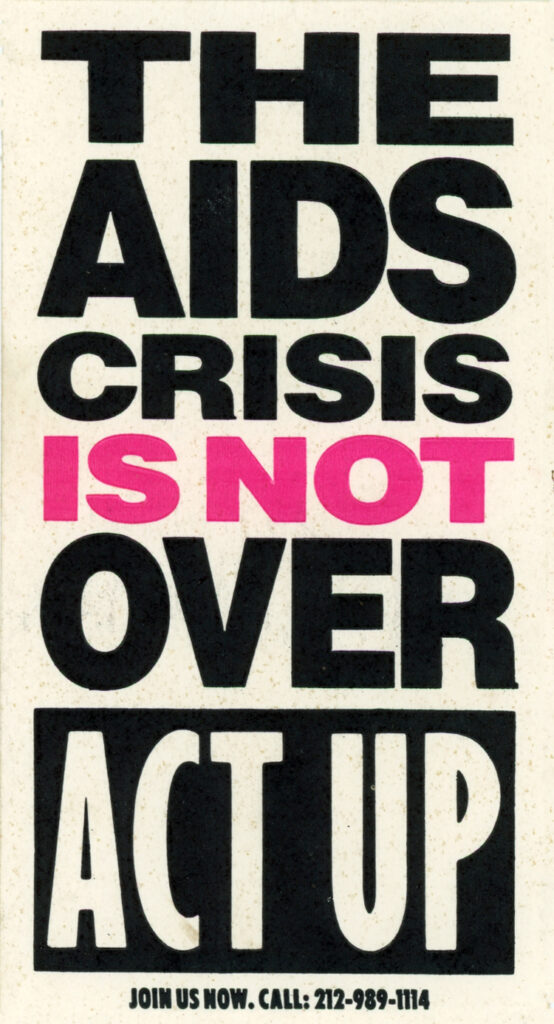
More recently, in 2014, Finkelstein created the Flash Collective, “a new paradigm in political art-making, in which a small group of people gathers for a very brief, concentrated period of time to produce a single artistic intervention in public space.” In conjunction with the Helix Queer Performance Network, the first collective that year produced #ThereIsnNoSafeSpace (This Is Not A Safe Space To Be Queer) for the New Museum and the streets of New York City.
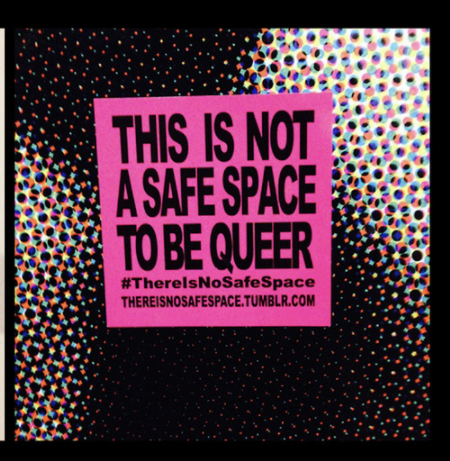
The second collective that year brought forth Queer Crisis, a sticker produced for and distributed at NYC’s annual Pride events. Finkelstein writes, “This sticker is a meditation on the ubiquitous rainbow flag, and is an attempt to re-orient it. The Tumblr page mounted by the collective clearly explains why: ‘When the rainbow flag was first designed in 1979, each color represented a different aspect of queer life, including hot pink for sexuality and turquoise for magic and art. By the 1980s, these two colors were removed, and quickly forgotten about. We oppose the erasure, corporatization, and commercialization of any radical aspects of queer culture, and so we reclaim the colors that remain. Within a day of its release, we had over 100 correspondences from across the Americas about the image…’.”
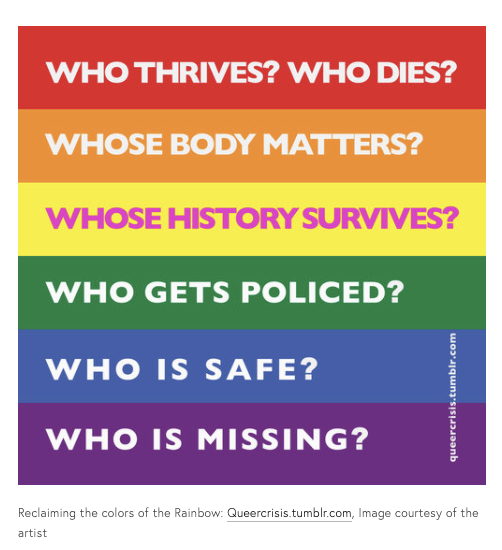
On a personal note, I had the very good fortune recently to interview Avram about some of his various sticker projects over the years. Stay tuned for Part II for excerpts!
[1] Finkelstein, Avram. The Silence=Death Poster. LGBTQ at NYPL. 22 November 2013. https://www.nypl.org/blog/2013/11/22/silence-equals-death-poster
